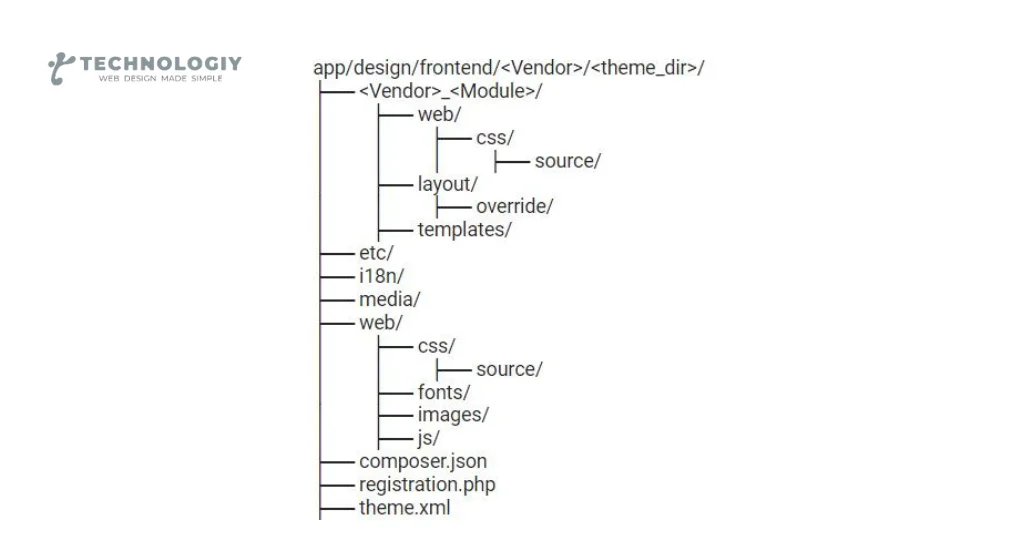Mastering the Art of Theme Development: Best Practices in Theme Development for Success Theme development is a crucial aspect of creating a visually appealing and functional website. It sets the tone and style for the entire user experience, making it essential for developers to master the art of theme development.
In this blog post, we will explore the Best Practices in Theme Development that can lead to success in this field.
Start with a Solid Plan:
Before diving into theme development, it’s vital to have a clear plan in place. Establish your objectives, identify your target audience, and clarify the overall purpose of your website. Consider the industry or niche you are working with and research current design trends. By establishing a solid plan, you can ensure that your theme aligns with your objectives and resonates with your audience.
Choose a Responsive Design:
In today’s world, centered around mobile devices, having a responsive design is imperative. Responsive themes automatically adjust to different screen sizes and devices, providing a seamless browsing experience for users. Not only does it enhance user satisfaction, but it also boosts your website’s search engine ranking. Make sure your theme is optimized for mobile devices to reach a wider audience.
Optimize for Speed:
Website speed is a critical factor that affects user experience and search engine ranking. Slow-loading websites lead to high bounce rates and lower conversions. To optimize your theme for speed, minimize the use of heavy media files and optimize images. Compress CSS and JavaScript files, and leverage caching techniques. By prioritizing speed, you can keep visitors engaged and improve your website’s performance.
Keep it Simple and Intuitive:
A disorganized and bewildering website can swiftly drive visitors away. When designing your theme, focus on simplicity and intuitiveness. Use clean layouts, easy-to-read fonts, and logical navigation menus. Ensure that your theme is user-friendly and allows visitors to find information effortlessly. Remember, simplicity is key to a positive user experience.
Customize Responsibly:
While customization options can be tempting, it’s crucial to exercise restraint. Too many customization options can lead to a bloated theme and a complicated user interface. Carefully choose the customization features that align with your website’s goals and avoid overloading your theme with unnecessary bells and whistles.
Test, Test, Test:
Thorough testing is an essential part of theme development. It ensures that your theme functions flawlessly across different browsers, devices, and operating systems. Test your theme’s responsiveness, load time, and compatibility. Identify and fix any bugs or issues that may arise. Regular testing will help you deliver a seamless experience to your users.

Stay Updated:
As technology evolves, so do design trends and coding standards. It’s essential to stay updated with the latest developments in theme development. Regularly update your theme to ensure compatibility with the latest versions of content management systems and plugins. By keeping your theme up to date, you can provide a secure and optimized experience to your users.
Mastering the art of theme development requires careful planning, responsiveness, speed optimization, simplicity, responsible customization, testing, and staying updated. By following these Best Practices in Theme Development, you can create themes that captivate your audience, enhance user experience, and improve your website’s performance. Stay ahead of the competition with Best Practices in Theme Development.
Best Practices in Theme Development for WordPress Users:
Boost Your Website’s Performance Are you looking to enhance your website’s performance? Look no further! In this blog post, we will explore the Best Practices in Theme Development that can help you boost your website’s performance. By following these guidelines, you can create a website that not only looks visually stunning but also functions flawlessly, ensuring an excellent user experience. Let’s dive right in!
Optimize for Speed:
One of the most crucial aspects of theme development is ensuring that your website loads quickly. Slow-loading websites can frustrate users and lead to a high bounce rate. To optimize for speed, choose a lightweight theme that doesn’t come with unnecessary features or bloated code. Minimize HTTP requests, optimize images, and leverage caching techniques to reduce load times.
SEO-Friendly Markup:
Implementing proper HTML5 markup and structured data can significantly improve your website’s visibility in search engine results. Use semantic tags, such as , , and , to give search engines a clear understanding of your website’s structure. Additionally, include relevant meta tags, descriptive URLs, and optimized headings to enhance your SEO efforts.
Clean and Well-Organized Code:
A well-structured codebase is crucial for theme development. Clean and organized code improves website performance, makes it easier to maintain and update, and ensures compatibility with future technologies. Follow coding standards, use proper indentation, and make sure your code is efficient and scalable. Avoid inline CSS and JavaScript, as they can make your website slower and harder to maintain.
Accessibility:
Make your website accessible to all users, including those with disabilities. Use proper alt text for images, provide descriptive link text, and ensure keyboard navigation is possible. Implementing accessibility Best Practices in Theme Development not only helps users with disabilities but also improves overall usability and search engine rankings.
Regular Updates and Maintenance:
Keep your theme up to date with the latest technologies and security patches. Regularly check for updates from theme developers and make necessary updates to ensure compatibility and security. Additionally, perform routine maintenance tasks like database optimization, broken link checks, and performance monitoring to keep your website running smoothly.
By following these best practices in theme development, you can significantly enhance your website’s performance, user experience, and search engine visibility. A well-optimized website not only attracts more visitors but also keeps them engaged, ultimately driving conversions and achieving your online goals. So, take the time to implement these practices and watch your website thrive!
Remember, the success of your website depends on the quality of your theme development. By prioritizing speed, responsiveness, SEO-friendly markup, clean code, cross-browser compatibility, accessibility, and regular maintenance, you can create a website that stands out from the competition and delivers an exceptional user experience. Start implementing these Best Practices in Theme Development today and see the positive impact on your website's performance.The Roadmap to Website Success:
Best Practices in Theme Development When it comes to creating a successful website, theme development plays a crucial role. A well-designed and user-friendly theme not only enhances the overall aesthetics of your website but also ensures a seamless browsing experience for your visitors. In this blog post, we will explore the Best Practices in Theme Development that will pave the way to website success.
Responsive Design:
In today’s mobile-centric world, having a responsive website is indispensable. Your theme should be able to adapt and provide optimal user experience across various devices, including desktops, tablets, and smartphones. Responsive design enhances both user engagement and elevates your search engine rankings.
Loading Speed:
Slow-loading websites can lead to high bounce rates and negatively impact your search engine rankings. Optimize your theme for faster loading times by leveraging techniques such as image compression, minification of CSS and JavaScript files, and utilizing caching mechanisms.
SEO-friendly Structure:
A well-structured theme can significantly contribute to your website’s search engine optimization efforts. Ensure that your theme follows SEO Best Practices in Theme Development, including proper heading hierarchy (H1, H2, H3, etc.), clean and semantic code, optimized meta tags, and XML sitemaps.
Customization Options:
Your theme should provide flexibility and customization options to meet your specific requirements. Look for themes that offer easy-to-use customizers, allowing you to change colors, fonts, layouts, and other visual elements without the need for coding knowledge.
Browser Compatibility:
Your theme should be compatible with all major web browsers, including Chrome, Firefox, Safari, and Internet Explorer. Test your theme thoroughly across different browsers to ensure consistent and error-free rendering.
Security Measures:
Protecting your website and its users should be a top priority. Choose themes that are regularly updated and maintained by the developers. Additionally, consider implementing security measures such as SSL certificates, strong passwords, and regular backups to safeguard your website from potential threats.
Clean Code:
A well-coded theme not only improves website performance but also simplifies future customization and maintenance. Avoid themes with bloated or poorly optimized code, as they can slow down your website and make it difficult to implement changes.
Documentation and Support:
Look for themes that come with comprehensive documentation and reliable customer support. Good documentation will guide you through the theme setup process, while responsive support will help you resolve any issues or answer your questions promptly.
Regular Updates:
Choose a theme that receives regular updates to ensure compatibility with the latest versions of WordPress and other plugins. Regular updates also address any security vulnerabilities and introduce new features or improvements.
By following these Best Practices in Theme Development, you can create a website that not only looks great but also performs exceptionally well. Remember, a well-designed theme sets the foundation for a successful website, helping you attract and retain visitors while achieving your online goals.
